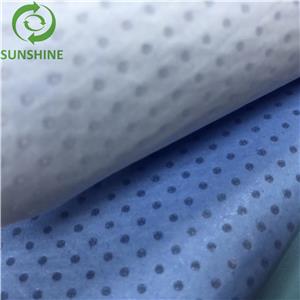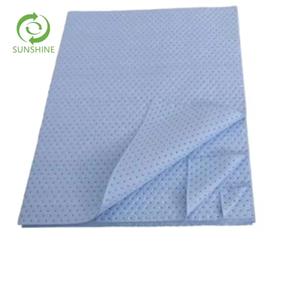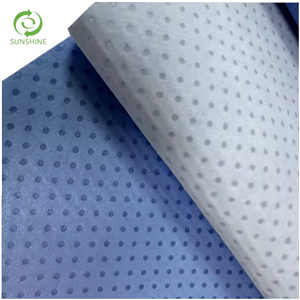- Home
- >
- News
- >
- Company news
- >
- Sunshine Nonwoven Fabric New Certificate
Sunshine Nonwoven Fabric New Certificate
We specialize in non-woven fabric field for 15 years,have 13 lines,with good quality and pretty competitive price.We have our own factory to meet any of your requriement.
In order to give our customers more confidence in our non-woven fabric product, we have conducted three new tests to prove that our non-woven fabrics are environmentally friendly, non-toxic and harmless to human body.
1.APEO Detection
The potential harm of APEO to the environment has been extensively studied and demonstrated. Some European countries have enacted laws and regulations to restrict the production and use of APEO since 1976. The limits of APEO for textiles and clothing exported to Europe are now clearly defined: no more than 0.1%.
1)Toxicity
Toxicity of NPEO9-10
LD50 = 1600mg/Kg; ECO 50 for water fleas is 42 mg/L; ECO 50 for algae is 50mg/L, indicating that NPEO is toxic to mammals and aquatic organisms and can cause cancer, and similar to other non-ionic surface activities.
2)Degradation rate
The degradation of APEO is slow, and its biodegradability is 0%-9%.
3)Environmental hormones
APEO has a similar estrogen effect, can endanger the normal hormone secretion of the human body chemicals, that is, the so-called "female effect" and distortion.
4)Harmful by-products

According to the test results,our non-woven fabrics product have passed the test,and both NPEO and OPEO are less than the evaluation value.
2. Azo Dyes
Some dyes containing azo structure may produce the above 24 carcinogenic aromatic amines after pyrolysis. Such dyes are banned by the European Union. These banned azo dyes account for about 7% - 8% of all azo dyes. More than 100 of the more than 20 aromatic amines specified in the decree will be released by reduction. Not all azo dyes are banned.
These clothing or other consumer goods dyed with prohibited azo dyes will mix with the components released in the process of metabolism and produce reductive reactions to form carcinogenic aromatic amines which will be absorbed by the human body. After a series of activation, the DNA structure of human cells will be formed. The change of function has become the inducement of human diseases.
Azo is one of the necessary items for international environmental protection. There are three kinds of test methods: thin layer chromatography (TLC), gas chromatography and mass spectrometry (GC-MSD) and high performance liquid chromatography (HPLC). The standard stipulates that no prohibited intermediate of azo dyes shall be contained in the products under test. If one of the products is found to be unqualified, the limit is 30ppm.

Remark : N = Not detected
Detection limit = 5 ppm
Requirement = 30 ppm (Max.)
ppm = parts per million = mg/kg
3.Formaldehyde
Formaldehyde formaldehyde is a toxic substance that is harmful to the protoplasm of biological cells. It binds to the proteins in the organism, changes the structure of proteins and solidifies them. Formaldehyde produces strong irritation to the body's respiratory tract and skin, causing respiratory inflammation and dermatitis. It is the trigger of a variety of allergies, long-term exposure to formaldehyde can lead to breathing difficulties, eczema and sensitivity, and in serious cases can even lead to cancer. Therefore, it is clearly stipulated that the formaldehyde content of products should be tested according to the corresponding standards.
The main harm of formaldehyde is to stimulate the skin and mucous membrane. When formaldehyde reaches a certain concentration indoors, people feel uncomfortable. The concentration of formaldehyde above 0.08 M can cause redness, itching, sore throat, hoarseness, sneezing, chest tightness, asthma, dermatitis and so on. Formaldehyde content in newly decorated rooms is high, which is the main cause of many diseases.

Limit of formaldehyde content:
China
Limitation of formaldehyde content in textiles
GB 18401-2001 (January 2003)
<20ppm (infants under twenty-four months)
<75ppm (direct contact with skin)
<300ppm (non direct contact with skin, interior decoration)
According to the above new certificate can show that our non-woven fabric products are environmentally friendly, non-toxic, harmless to the human body and skin.If you have interested for our non-woven fabric,pls contact us.






